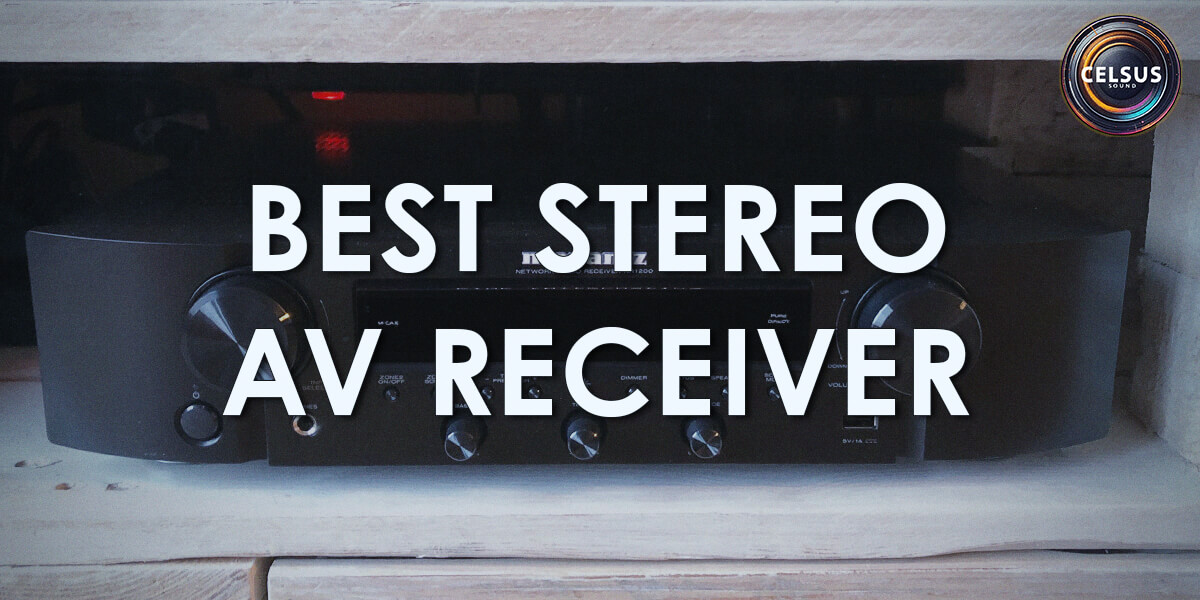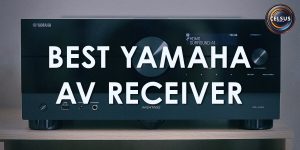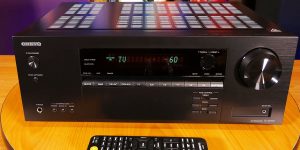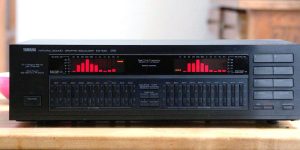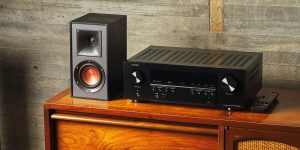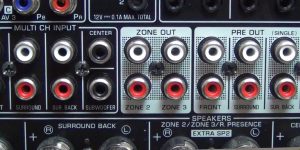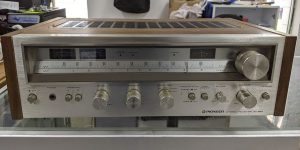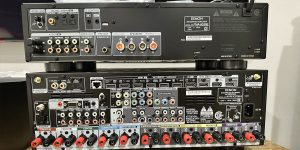If you’re on the lookout for the best stereo receivers, you’ve come to the right place. Stereo receivers have long been a cornerstone of audio systems, providing a central hub for connecting various audio sources and delivering high-quality sound to speakers. Today, I will explore the finest ones, catering to vinyl enthusiasts and those seeking superior sound quality over all-in-one wireless speakers.
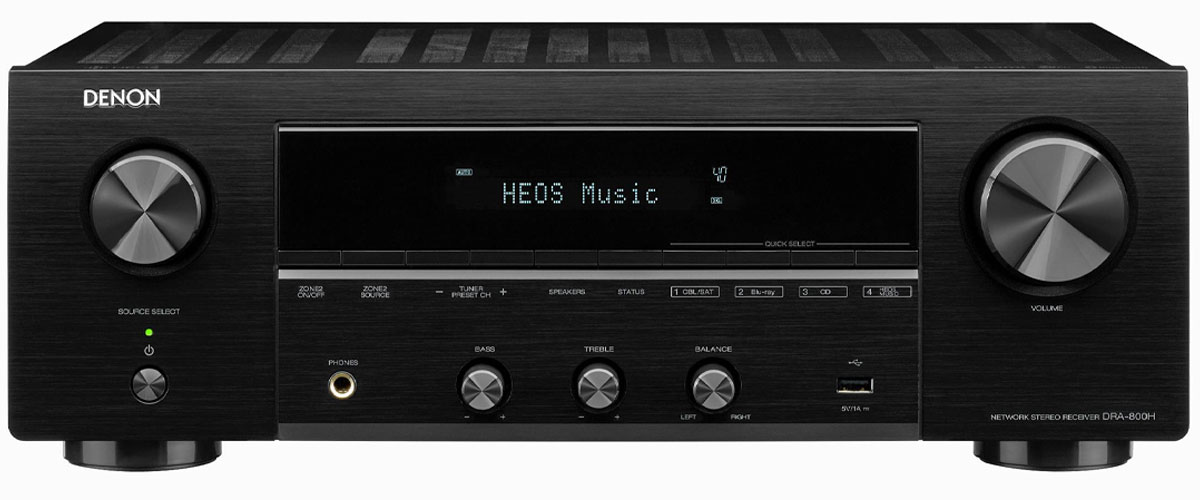
Stereo receivers comparison table
| Name | Channels | Power output | HDMI in/out | Bluetooth/Wi-Fi | Review |
|---|---|---|---|---|---|
| Denon DRA-900H best overall | 2.2 | 100W/8 Ohm, 120W/6 Ohm | 5/1 | yes/yes | Review |
| Marantz Stereo 70s also great | 2.1 | 75W/8 Ohm, 100W/6 Ohm | 6/3 | yes/yes | Review |
| Sony STR-DH190 budget | 2.0 | 90W/8 Ohm | 0/0 | yes/no | Review |
Best stereo receiver reviews
| Article navigation |
|---|
| Denon DRA-900H – best overall |
| Marantz Stereo 70s – also great |
| Sony STR-DH190 – best budget |
| Cambridge Audio AXR100 |
| Yamaha R-S202 |
| Marantz NR1200 |
| FAQ |
Denon DRA-900H – best overall

Quite ancient by the standards of technology, the Denon DRA-900H opens my rating. Since it is still relevant (released in 2019), and its price now belongs to the budget (sold at a discount), combined with excellent features from the famous brand, it is the most desirable stereo receiver for music today. It deserves first place.
The traditional style of its receivers Denon has not changed for years, so DRA-900H makes it hard to stand out from the crowd. But, again, since the model was released a long time ago, it has premium components (and costs a little over $300), and all buttons, controls, and connectors are of very good quality. The only thing I never like about the design is the control buttons directly below the LCD. I always get my hands all over the front panel. Otherwise, I have no complaints about Denon, and the accuracy and smoothness of the volume control are a compliment (we’ll look at more budget options later, and you’ll see what I mean).
The Denon DRA-900H is a 2-channel stereo receiver with a power output of 100W for 8 Ohm speakers. The receiver incorporates a high-quality 8-channel DAC that faithfully converts digital audio signals into analog, preserving the integrity of the sound.
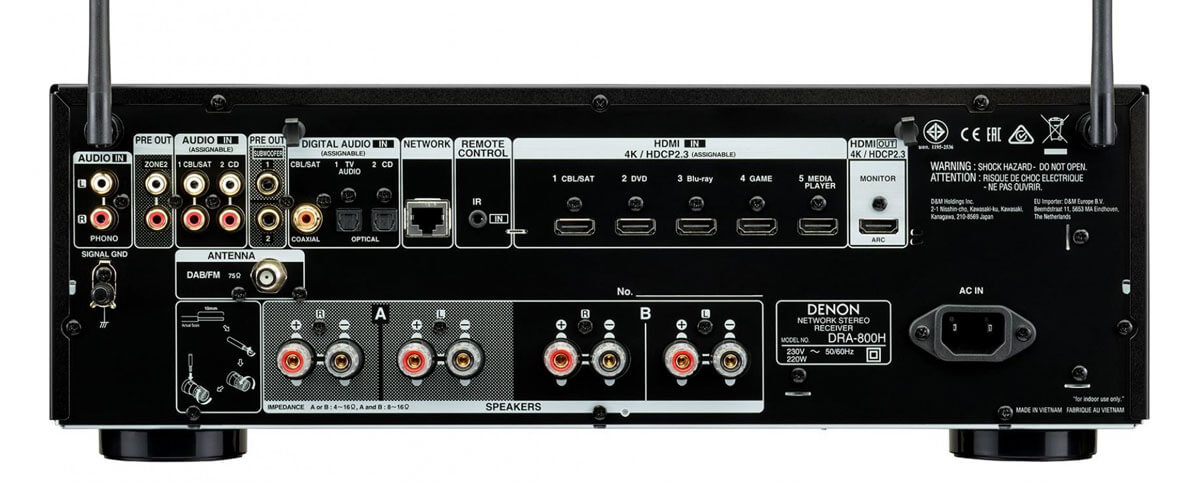
The Denon DRA-900H supports bi-amping. So, during the tests, I managed to dedicate separate amplifiers to handle the low-frequency and high-frequency drivers of compatible speakers. It allowed me to further enhance audio clarity and precision. Additionally, the receiver offers A/B switching.
The Denon DRA-900H features multiple HDMI input (5) and output (1) ports with 4K Ultra HD support, offering compatibility with HDMI ARC and HDMI CEC. It also has phono input, subwoofer output, and digital audio outputs. Typically, for its class, the receiver supports Wi-Fi and Bluetooth. On the multiroom side, I tested it with HEOS speakers, and it works fine, with no flaws.
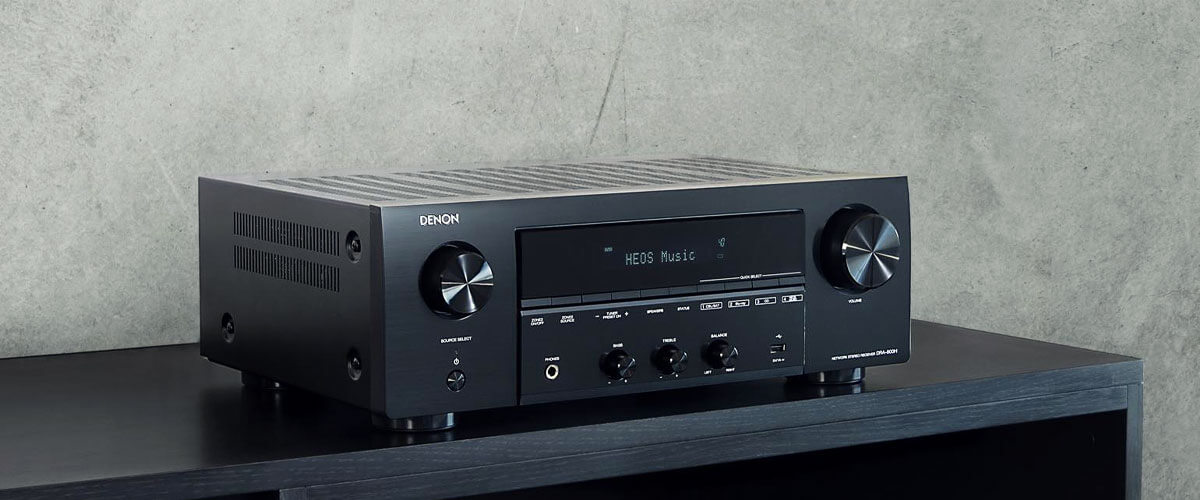
During testing, the DRA-900H showcased its ability to reproduce the smallest nuances of instruments in instrumental tracks like Eric Johnson’s “Cliffs of Dover” and Ludovico Einaudi’s “Nuvole Bianche.” Pop songs like Adele’s “Rolling in the Deep” and Billie Eilish’s “Bad Guy” offered vibrant vocals and dynamic soundscapes.
But when playing hard rock and heavy metal, the receiver copes with the compositions of bands like Metallica and AC/DC, but not so splendidly. It lacks the bass part, so a subwoofer is simply necessary (I test with and without a sub to understand the device’s full potential). But the detail of complex compositions and the distortion needed in such styles sounds great (especially if you remember the cost of the receiver).
Denon DRA-900H is the best 2-channel receiver in my selection, by right. Here are the reasons why. The Denon’s sound is warm and detailed, and even if it lacks a bit in the bass part (just add a good sub – it’s needed anyway), it perfectly conveys the author’s intention of a piece of music in different styles. Its realism lends itself well to vinyl, but digital wireless transmission via HEOS or other options is great, too. This model is a hybrid model because it has 5/1 HDMI ports. And even though you won’t be able to watch movies with surround sound, you’ll still appreciate the soundscape and 4K picture (it doesn’t support 8K because it was released in 2019). Today, this feature set is more than enough for most people wanting a non-professional home audio system (100 watts of power will fill almost any size room). And its discounted price is just beckoning. If you’re not chasing the latest generation of innovations and appreciate the high-quality realistic sound, and at the same time, want not to go broke – it’s the ideal option.
Key specs
- Channels: 2.2.
- Power output: 100W/8 Ohm, 120W/6 Ohm.
- HDMI inputs/outputs: 5/1.
- Video functions: 4K/60Hz.
- Bluetooth/Wi-Fi: yes/yes.
- Streaming services: Airplay 2, Pandora, Spotify, Napster, SiriusXM, TIDAL, Deezer, Qobuz, Amazon Music.
- Supports: ARC, HDR, HLG.
Pros
- An excellent combination of features sufficient for most users, great sound at a low price (price reduced).
- An immersive and captivating sound that literary enlivens the music.
- The DRA-900H excels in wireless connectivity, offering Wi-Fi and Bluetooth support.
- The receiver also features a full-fledged graphical user interface, making it easy to navigate.
Cons
- Without the use of a sub, it doesn’t handle the complex bass parts of compositions very well.
- The receiver’s app ecosystem is relatively limited compared to some other brands.
Marantz Stereo 70s – also great
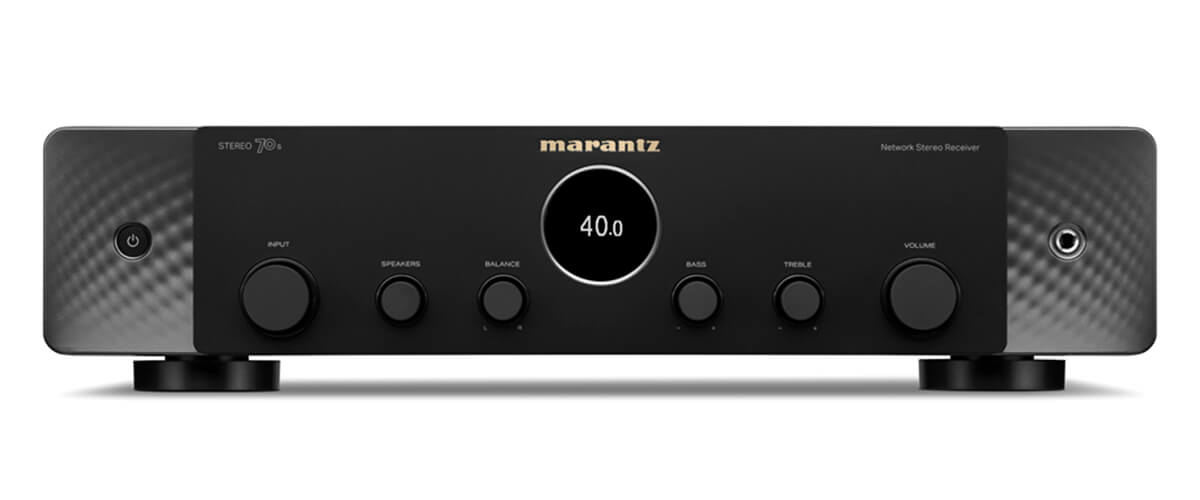
The Marantz Stereo 70s was released in 2023 and was actually a replacement for the Marantz NR1200 model. By the way, the number “70” in the model name symbolizes 70 years since the creation of the Marantz company. So, I was expecting something special from this device and was not wrong in my predictions.
The design is traditional for the brand, with a round screen in the middle of the front panel. Even to the touch, it feels premium (as it should be for high-end Marantz). The Stereo 70s’ slim design affects its power (it’s smaller than the Denon DRA-900H) but doesn’t affect sound quality. Usually, in narrow-profile receivers, all components are located too close and tend to overheat. This did not happen with this model during testing. Still, make sure to provide it with adequate ventilation.
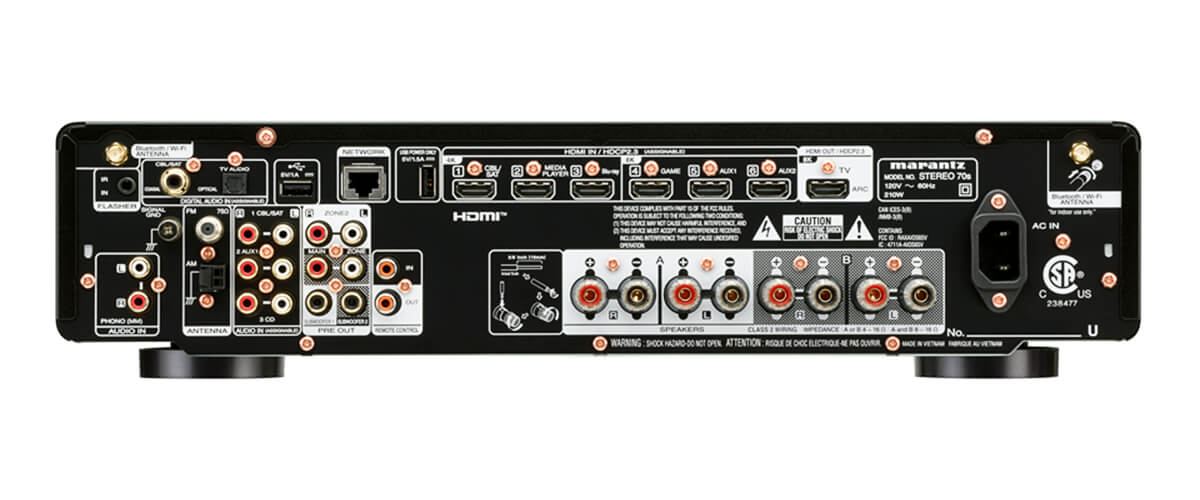
The Marantz Stereo 70s is a stereo network receiver that is aimed not only at music enthusiasts but also at movie buffs. Its fully discrete Class A/B amplifier provides Power Output 75 Watt (8 Ohms, 20 Hz – 20 kHz, 0.08% 2ch Drive). This receiver is also equipped with HDAM (Hyper Dynamic Amplifier Modules) modules, designed to significantly improve sound quality over traditional integrated operational amplifiers used in conventional audio devices. In addition, you have the option to connect two subwoofers and utilize the amplifier outputs for future system expansions with external power amplifiers.
With four speaker outputs, the Stereo 70s allows you to power two pairs of speakers independently. Additionally, with the amplified outputs in a 2.2 configuration, you can expand your sound system to other zones using wires. Still, you can also use multi-room technology and HEOS streaming to expand wirelessly with compatible devices. Doesn’t that sound good?
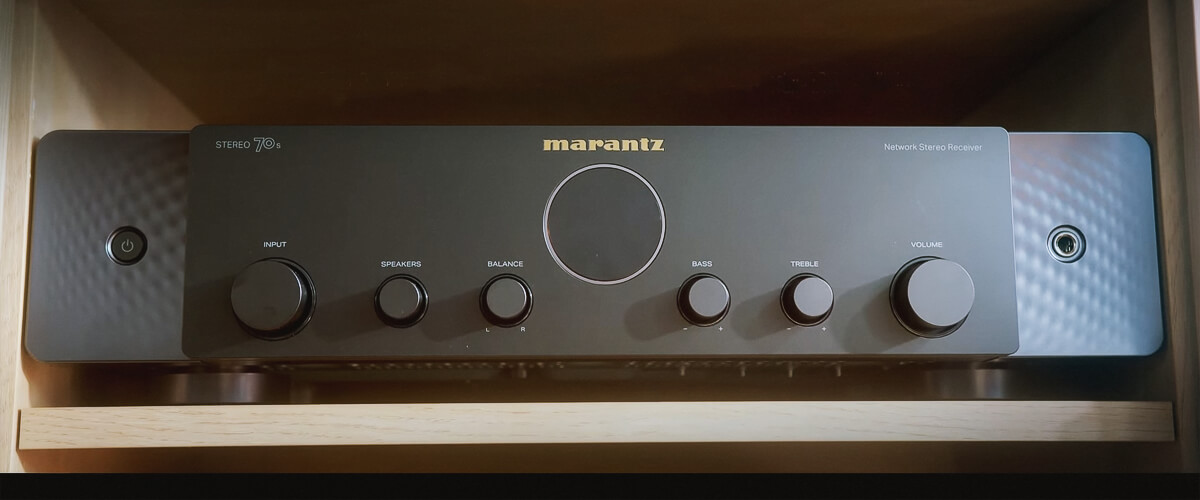
And now for the versatility I mentioned at the beginning. A variety of connectivity options make this stereo receiver a versatile entertainment center. With three analog RCA inputs, plus an additional input for connecting a vinyl turntable, digital optical, and coaxial inputs, you have absolute freedom to connect various audio components. You can also use the USB A input, Bluetooth, and network playback via Ethernet or Wi-Fi.
And there’s one more nice thing about it. Stereo 70s is equipped with six HDMI inputs, including three with support for 8K video. Agree that this is another serious argument in favor of this model.
Is it worth explaining that the sound of this rather expensive receiver meets the modern requirements of home stereo systems? Warmth, dynamics, detail, frequency separation, vocals – everything works with the highest possible balance. Yes, Stereo 70s lacks power, but this is the reason why Marantz has provided the possibility to connect two subs. Trust me, it can effortlessly fill a room of about 500 square feet with sound.
The Marantz Stereo 70s is also a great 2.2-channel receiver that will provide excellent sound for any song from various sources (turntable, digital media, streaming audio) and will allow you to enjoy watching videos up to 8K resolution with enhanced sound. It is more advanced than the Denon DRA-900H (released 4 years later), supports more modern features, and has more HDMI ports. It uses premium components and unique brand technologies (HDAM). At the same time, the narrow design allowed the manufacturer to provide the listener with only 75W of power, although Marantz compensated for this shortcoming with the ability to connect two subs. Is it worth paying for this cost, which is 3 times higher? Only you can answer this question yourself. But I guarantee this unit will serve for many years without losing its relevance.
Key specs
- Channels: 2.1.
- Power output: 75W/8 Ohm, 100W/6 Ohm.
- HDMI inputs/outputs: 6/3.
- Video functions: 8K/60Hz, 4K/120Hz, 4K/60Hz pass-through, video upconversion (up to 1080p and 8K) for analog and HDMI sources.
- Bluetooth/Wi-Fi: yes/yes.
- Streaming services: Airplay 2, Pandora, Spotify, Napster, SiriusXM, TIDAL, Deezer, Qobuz, Amazon Music.
- Supports: HDMI ARC, HDMI CEC, HDCP2.3, HDR10, HDR10+, Dolby Vision.
Pros
- 8K, HDR10+, and Dolby Vision support.
- A fully discrete Class A/B amplifier and two subwoofer outputs that deliver clear, natural sound and deep bass.
- Advanced integration with music services, including Tidal, Spotify Connect, and AirPlay 2.
- HEOS availability.
Cons
- Less power than the Denon DRA-900H (75W vs 100 Denon), but this is due to the narrow profile.
- The front USB port looks vulnerable to constant use.
Sony STR-DH190 – budget
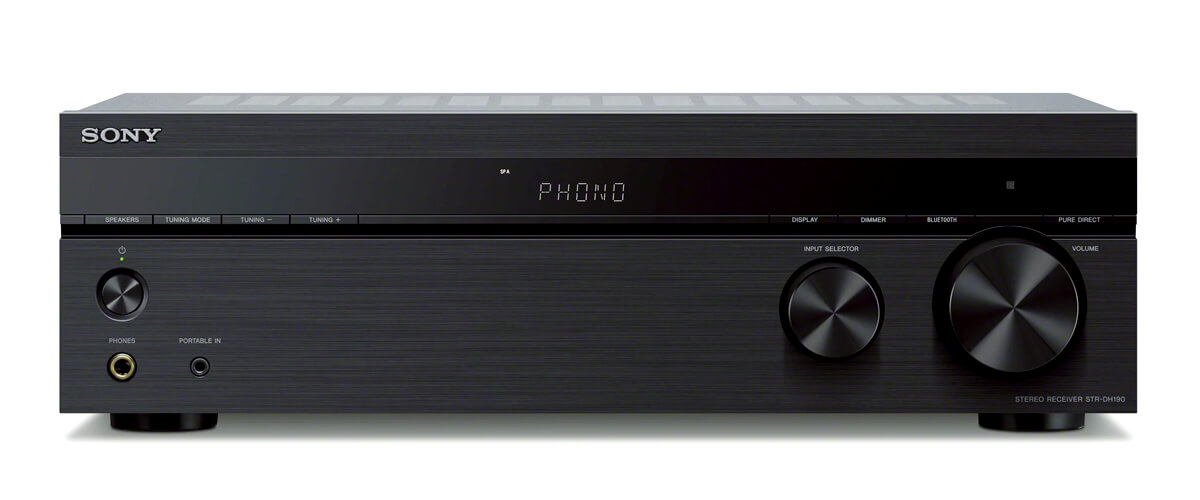
Sony is one of the biggest brands in the audio industry. So, it’s no surprise that the STR-DH190 2-channel receiver has been one of the most popular budget options for years and is liked by almost everyone who deals with it. The model was released in 2018 and is this review’s most cheap stereo receiver. But that doesn’t make it bad. You just need to understand what to expect.
The STR-DH190 has a classic look, with a slim LCD and narrow buttons underneath. The surface of the case is reminiscent of traditional Sony products from the 90s, and it doesn’t seem fragile at all, although you can easily squeeze it with your fingers if you push it (don’t do this!). The controls work stably, but the volume control is a bit tight. Connectors on the back panel are simple; plastic spring terminals are used to connect the speakers. But this is normal for last-generation equipment.
The Sony STR-DH190 is a two-channel receiver with a power output of 100W for 8 Ohm speakers. Sony focuses on implementing high-quality components in the amplifier design, even in the budget segment. The receiver features a built-in DAC. I also was surprised to find Sony brand capacitors inside the unit. So, they definitely didn’t try to save money on the components. It can be the reason why Sony STR-DH190 does not support bi-amping or A/B switching.
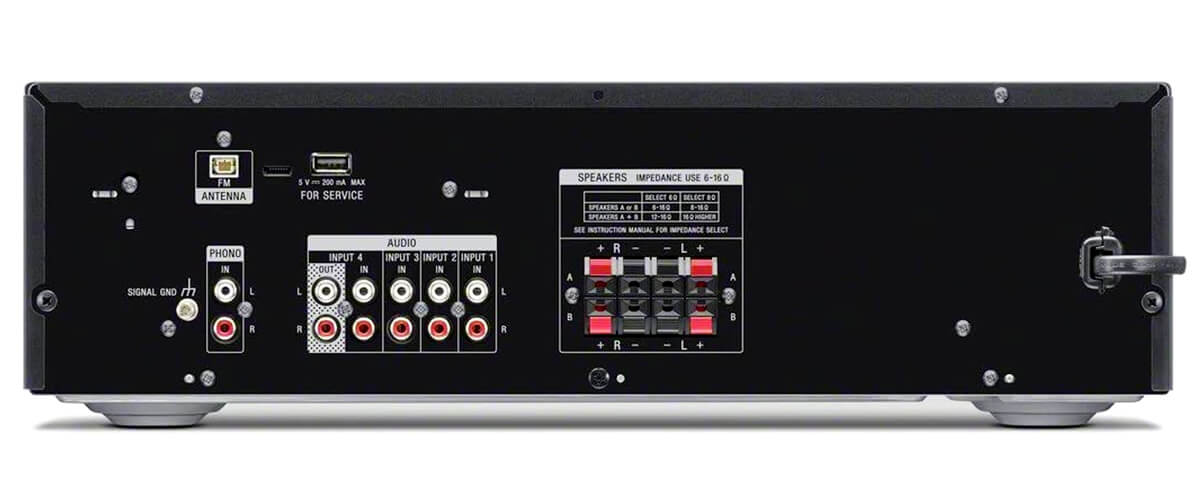
The Sony STR-DH190 features several analog audio inputs, including a dedicated phono input for connecting a turntable. While the receiver does not provide HDMI connectivity, it compensates with other connections. So, there is nothing special about it. It also doesn’t have Wi-Fi but features Bluetooth connectivity.
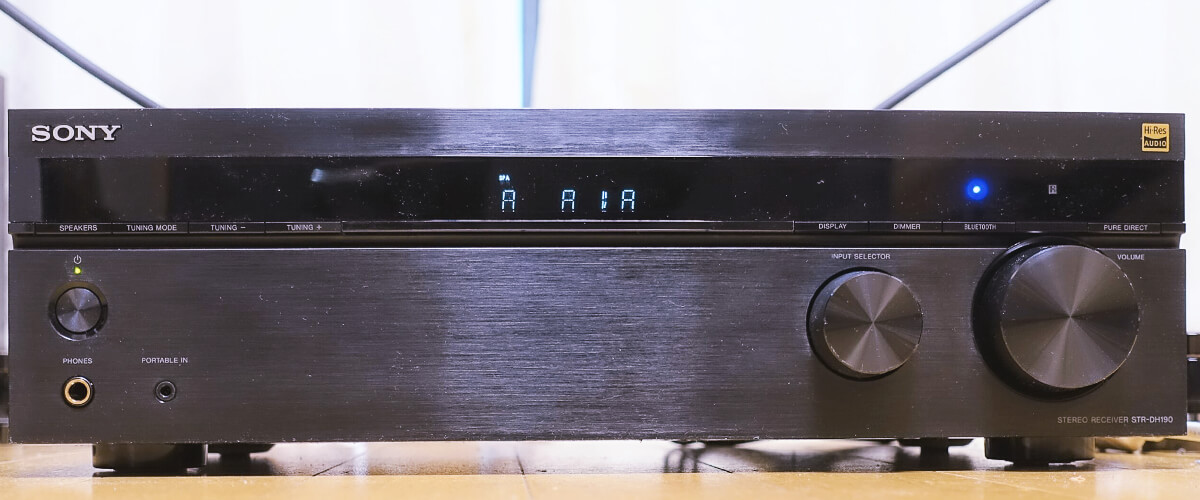
The Sony STR-DH190 delivers a well-rounded audio experience, excelling in music reproduction across different genres. I used approximately the same list of songs as with the Denon DRA-900H. Instrumental tracks sound with clarity and precision, allowing the intricate details of each instrument to shine. It also worked great with pop songs and heavy metal. I especially enjoyed the low distortion with the latter. But you can’t expect a full 100W of power like with the Denon DRA-900H because the THD is 1%, so don’t crank the volume too high.
The Sony STR-DH190’s disadvantages over its predecessors, the Denon DRA-900H and Marantz Stereo 70s, are obvious. It can’t reach the promised 100W without distortion, and this 2-channel receiver doesn’t have modern connections (like HDMI) or even Wi-Fi. Only phono input, RCA audio, radio, and Bluetooth. So, it can only serve as an amplifier for music. That’s about it. But its incredibly low cost and ability to give the sound of songs the inherent charm and quality of Sony gear make it worthy of this list. There’s no shame in having good (albeit outdated by today’s standards) equipment. The main thing is to understand your goals.
Key specs
- Channels: 2.0.
- Power output: 90W/8 Ohm.
- HDMI inputs/outputs: 0/0.
- Video functions: has not.
- Bluetooth/Wi-Fi: yes/no.
- Streaming services: has not.
Pros
- Excellent Bluetooth signal range, outputs precise and natural sound even from greater distances.
- Once the grounding wire is securely fastened, there is no buzzing present in the phono.
- Bluetooth connection works seamlessly with no delays and covers a great range.
Cons
- The volume button is a bit stiff to operate.
Cambridge Audio AXR100
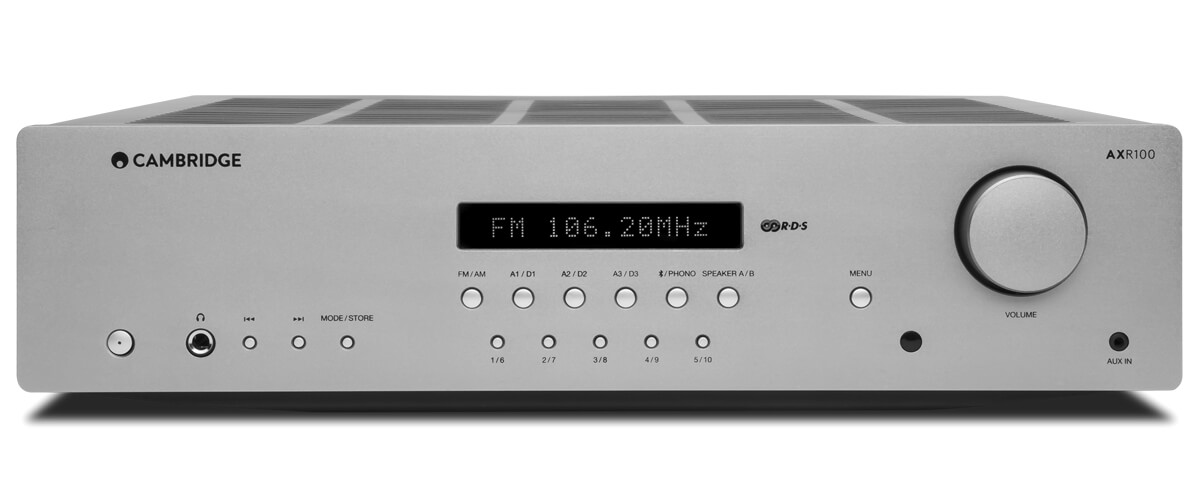
Cambridge Audio is a reputable brand famous for its commitment to delivering high-fidelity audio products. The AXR100 is part of their attempt to create a new lineup that would be a remarkable combination of performance and versatility. AXR100 comes in a futuristic design. The manufacturer used premium materials to ensure both aesthetic appeal and durability.
The Cambridge Audio AXR100 is a 2-channel stereo receiver that packs a punch in terms of power. This unit also surpasses Marantz NR1200 in terms of power and delivers 100w of power output. The AXR100 supports bi-amping. Unlike Sony, this manufacturer uses circuit components from other brands, but nowhere this means that they use cheap ones.
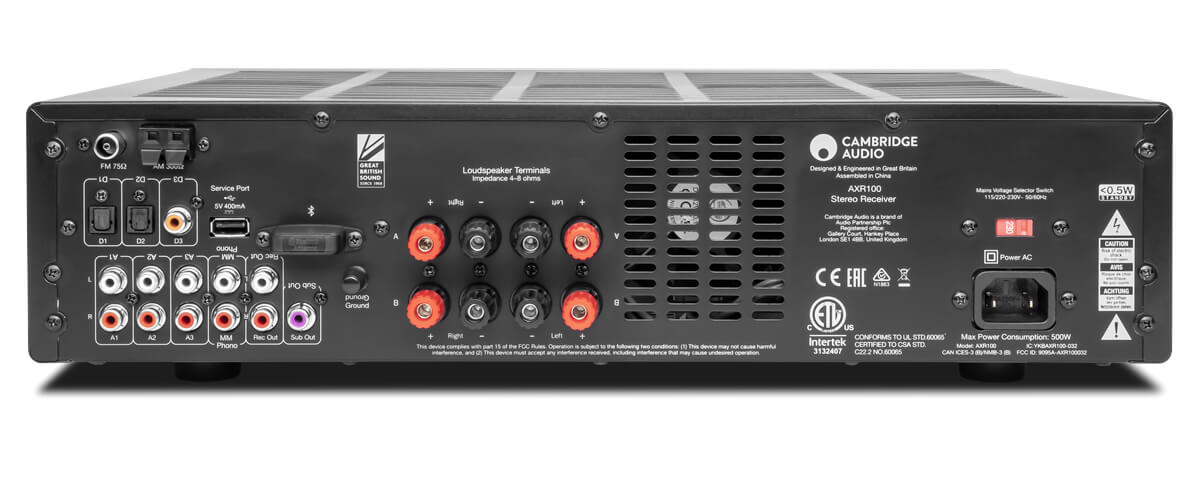
The unit comes with a complete range of connectors and ports. Just like previous units from Denon and Marantz, the unit offers HDMI ARC and CEC. It also allows easy control of audio transmission between the devices. Coaxial, phono, subwoofer outputs, and optical ports strongly reminded me of Marantz NR1200.
The AXR100 additionally features built-in Wi-Fi allowing you to use Spotify and Apple Music. The receiver supports Bluetooth with support for multiple codecs, including AAC, AptX, and LDAC. It unites it with Marantz NR1200 and Denon DRA-900H. HEOS-compatible speakers also show no problems, except for rare delays.
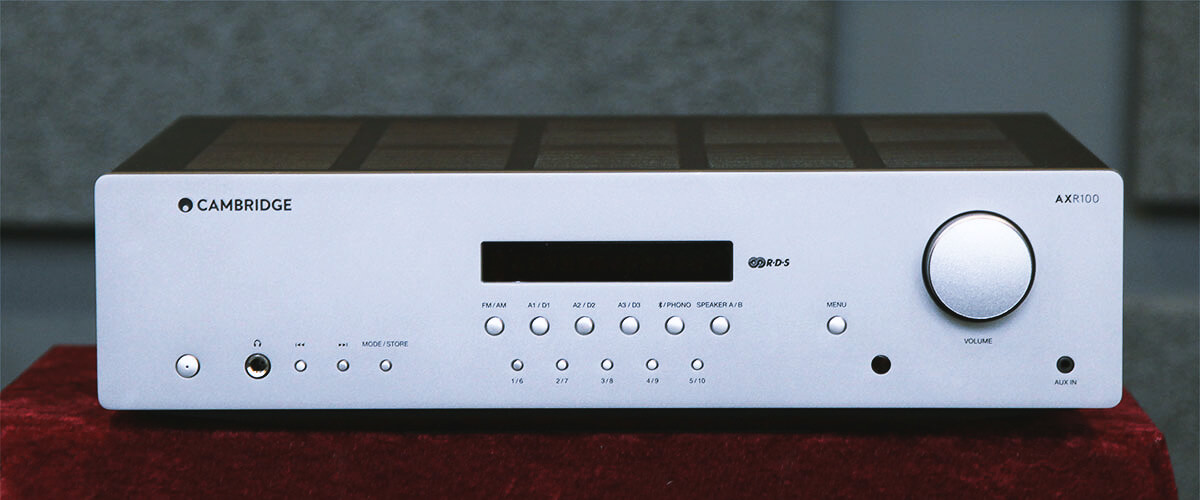
The Cambridge Audio AXR100 delivers a captivating and immersive sound experience, particularly in music. I enjoyed its ability to reproduce instrumental tracks with exceptional clarity, offering a lifelike and engaging soundstage. When testing the AXR100 with pop songs, the receiver shines in rendering dynamic vocals and energetic soundscapes with vibrancy and excitement. In the realm of movies, the AXR100 showcases its ability to handle powerful and fierce sound.
Overall, the Cambridge Audio AXR100, by right, belongs to top-rated stereo receivers, as it managed to impress me with its powerful performance, versatile connectivity options, and remarkable sound reproduction, making it an excellent choice for music enthusiasts seeking a high-quality stereo receiver.
Key specs
- Channels: 2.1.
- Power output: 100W/8 Ohm.
- HDMI inputs/outputs: 0/0.
- Video functions: has not.
- Bluetooth/Wi-Fi: yes/no.
- Streaming services: has not.
Pros
- The sound clarity and volume levels are truly astonishing.
- The receiver exudes exceptional sturdiness and boasts a robust build quality, providing a reassuring tactile experience.
Cons
- The remote control falls short in terms of quality and functionality, leaving room for improvement.
- The initial setup process may be a bit daunting.
Yamaha R-S202
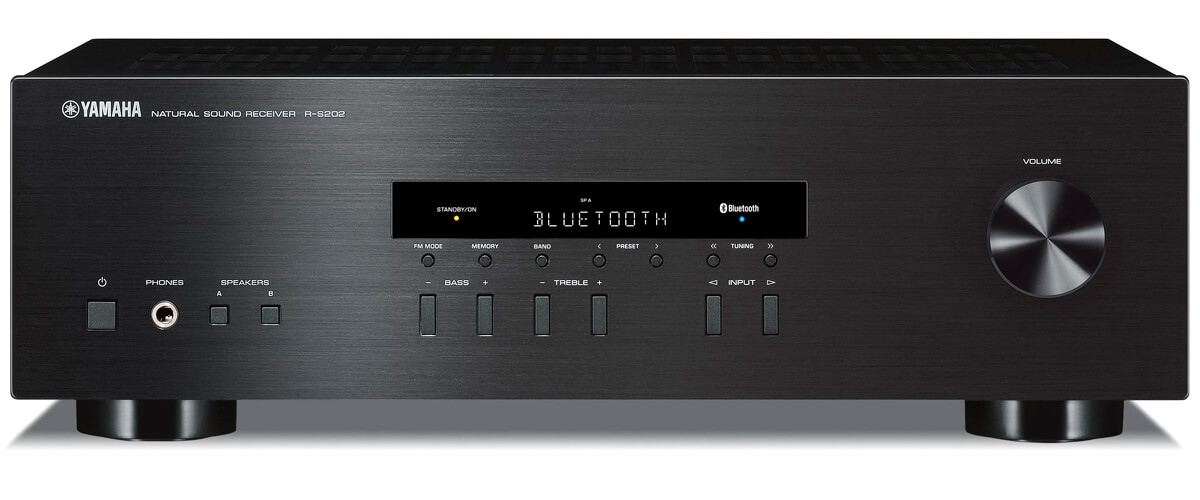
Finally, we came to the closing part of this review. I decided to keep Yamaha till the end because this brand knows its way into the AV receiver industry. Exceptional performance, quality built, new technologies, and fresh design solutions are only a few of the compliments you may hear to be given to this company.
Yamaha R-S202 is a standout model that combines affordability with impressive features. Despite being cheaper than Denon and Marantz’s solutions listed in this review, the R-S202 shares the same 100W of power per channel.
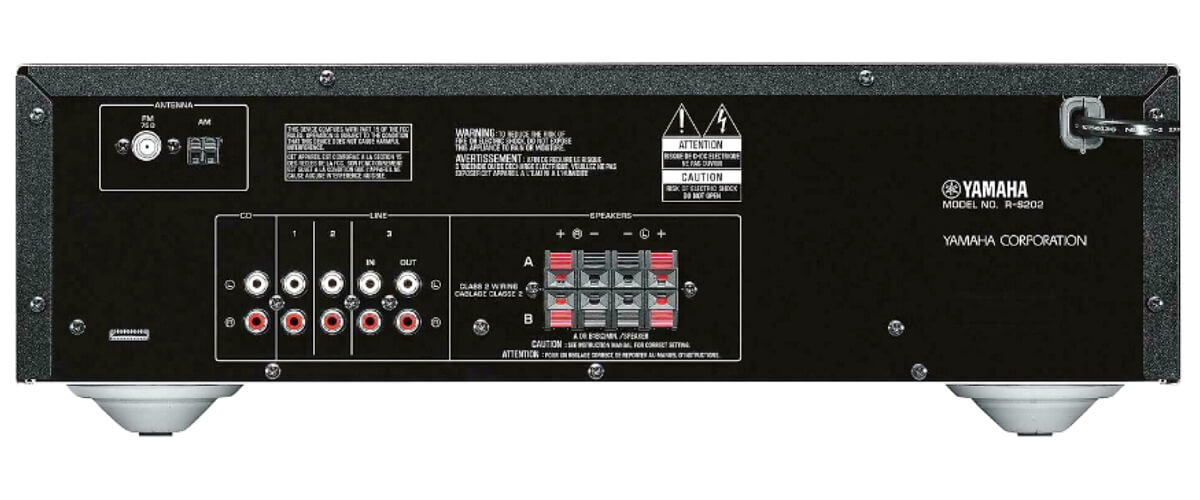
While the R-S202 does not support bi-amping or A/B switching, Yamaha’s emphasis on audio purity ensures a captivating listening experience, and they didn’t exaggerate this.
The Yamaha R-S202 excels in its diverse analog connectivity options, including a phono input for turntables. While lacking HDMI, it compensates with subwoofer output and coaxial/optical digital inputs. Sadly, this receiver doesn’t have Wi-Fi. Thus, it also doesn’t support streaming, but it offers Bluetooth, and I still managed to use Apple Music, but from my phone.
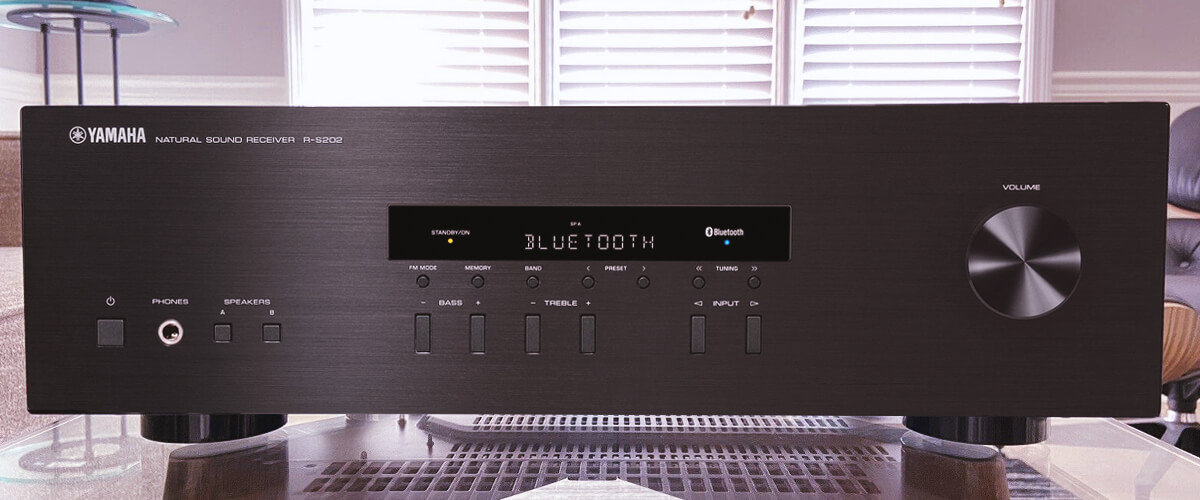
The Yamaha R-S202 excels in delivering a rich and immersive sound experience across various music genres. Classical music showed how to cool the unit can reproduce instrumental tracks with exceptional clarity, capturing the subtleties and nuances of each instrument. In turn, rock ballads showed powerful vocals and dynamic guitar reefs with distinctive drums.
Overall, the Yamaha R-S202 impresses with its exceptional performance, affordability, and diverse analog connectivity options. While lacking Wi-Fi and streaming support, its Bluetooth capability allows for enjoyable music playback. With captivating sound reproduction and a sturdy build, this model is one of the most interesting stereo receivers with Bluetooth.
Key specs
- Channels: 2.0.
- Power output: 140W/8 Ohm.
- HDMI inputs/outputs: 0/0.
- Video functions: has not.
- Bluetooth/Wi-Fi: yes/no.
- Streaming services: has not.
Marantz NR1200
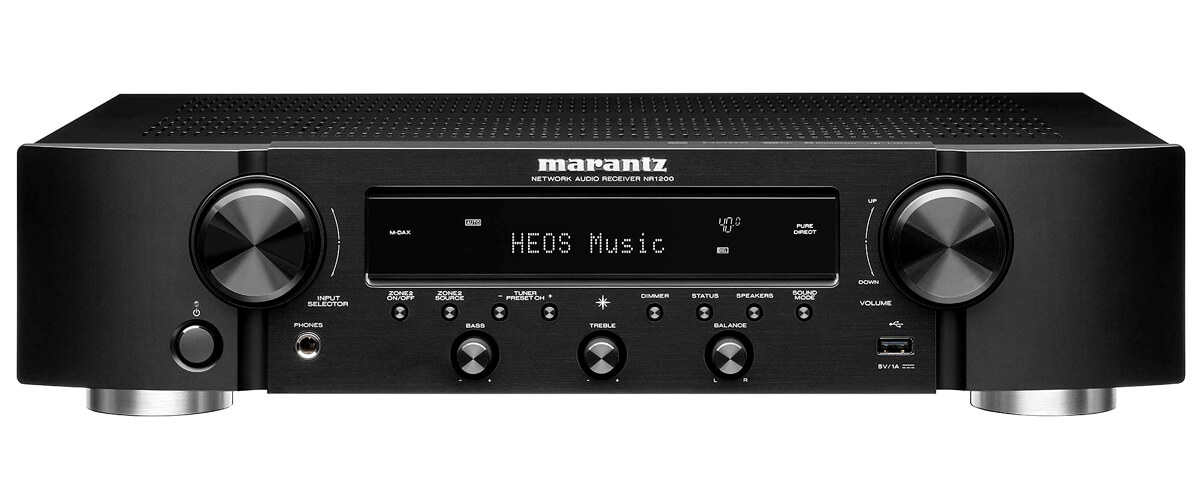
Marantz is another highly regarded brand on this list. For me, they are special for their commitment to delivering premium audio products. It provides 75W, which is less even if compared to the budget Sony STR-DH190, but the receiver incorporates a high-quality AKM DAC. Just like the best home stereo receiver in the list – Denon DRA-900H, the Marantz NR1200 supports bi-amping. Similarly, both models offer A/B switching.
I had no problems accommodating all my audio and video devices for testing this unit. It features several HDMI ARC and HDMI CEC functionalities. Also, it has numerous phono, coaxial, digital, and optical connections.
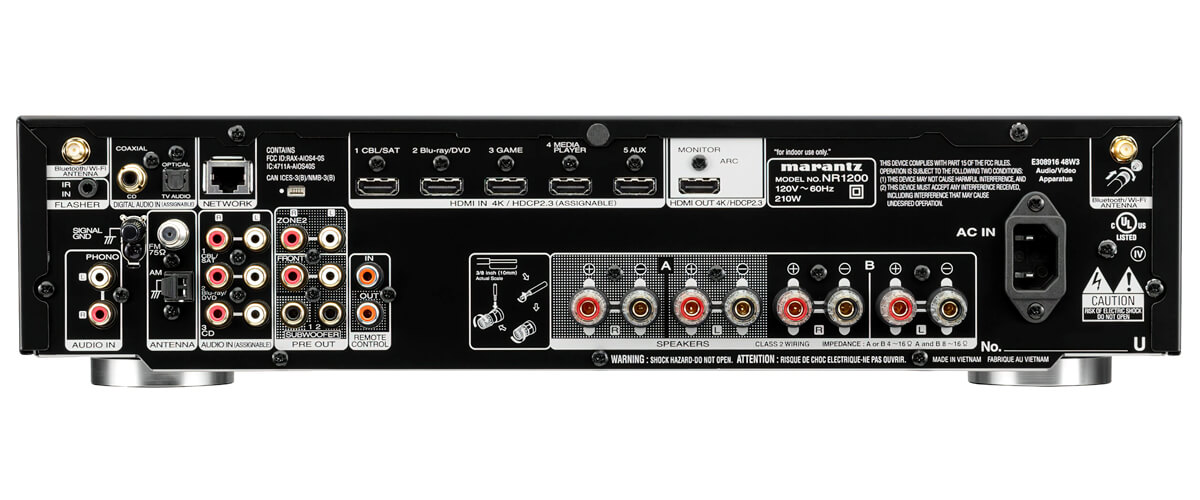
Marantz also filled their NR1200 with versatile wireless connectivity options, including Wi-Fi and Bluetooth. I also tested it with Apple Music and Spotify—both work seamlessly.
When it comes to music, I would like to highlight its ability to reproduce instrumental tracks with remarkable precision, bringing out the subtle nuances of each instrument. When testing the NR1200 with pop songs (Adele’s “Rolling in the Deep” and Billie Eilish’s “Bad Guy”), vibrant vocals, and dynamic soundscapes, creating an engaging and enjoyable listening experience.
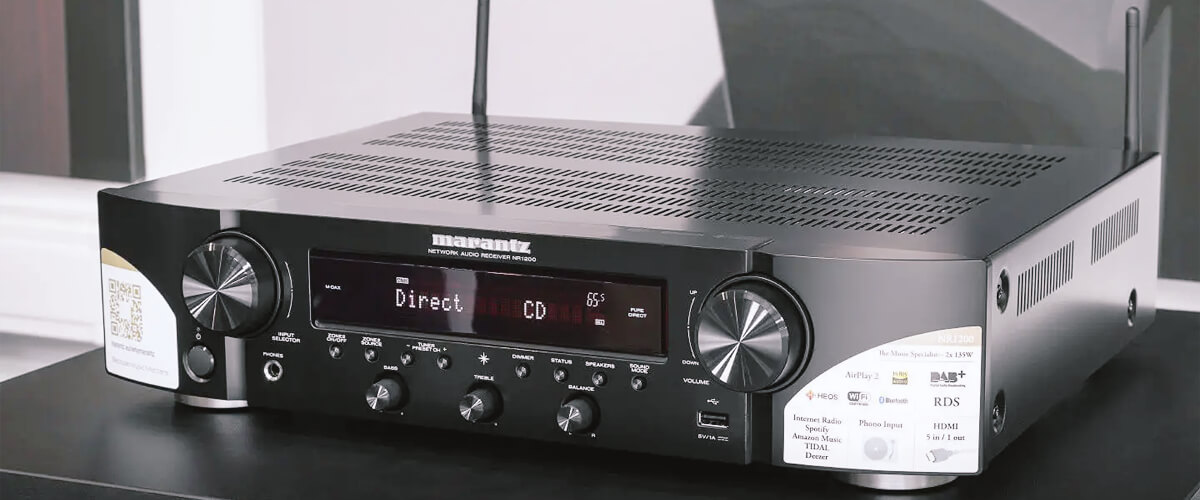
In the realm of hard rock and heavy metal (Scorpions and Metallica), the NR1200 showcases its prowess in handling powerful and intense sound. Tracks like Rock You Like a Hurricane demonstrate the receiver’s capability to deliver tight and punchy bass, razor-sharp guitar riffs, and thunderous drumming, capturing the essence of these genres.
In this review, I often compared the Marantz NR1200 with Denon DRA-900H. The thing is that these two models are pretty close, and both have their company-special vibes and sounds.
While this unit may not be the best stereo receiver, Marantz NR1200 still impresses with its powerful performance, versatile connectivity options, and remarkable sound reproduction.
Key specs
- Channels: 2.2.
- Power output: 75W/8 Ohm, 100W/6 Ohm.
- HDMI inputs/outputs: 5/1.
- Video functions: 4K/60Hz.
- Bluetooth/Wi-Fi: yes/yes.
- Streaming services: Airplay 2, Pandora, Spotify, Napster, SiriusXM, TIDAL, Deezer, Qobuz, Amazon Music.
- Supports: ARC, HDR, HLG.
Pros
- An incredibly versatile array of features capable of catering to diverse needs.
- Intuitively designed for seamless operation and effortless enjoyment.
Cons
- Minor quirks don’t allow it to unleash the full potential of HEOS technology.
- Delivers an impressive phono stage experience, though it falls just short of greatness.
Stereo receivers buying guide
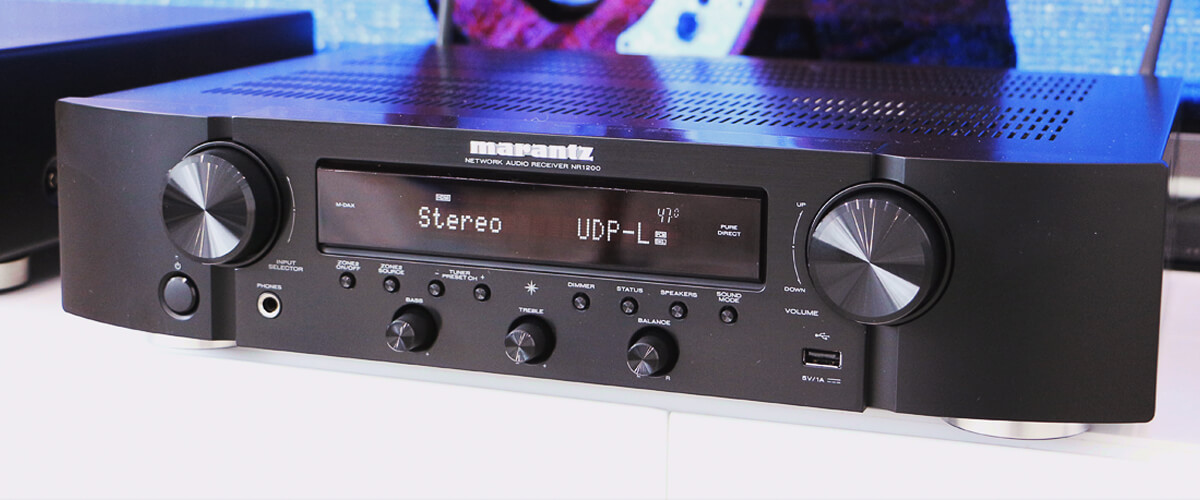
Power rating
Probably when riding mine stereo receiver reviews, you have already seen that I always mentioned the power. It is measured in watts per channel and determines the maximum volume output of the receiver. Generally, the higher the wattage, the more powerful speakers the unit will drive.
In simple terms, higher power means louder and more powerful sound. However, it’s important to note that wattage doesn’t always correlate with sound quality, as every receiver model is unique in this regard.
Receiver connections
Stereo receivers offer various connection options to accommodate different audio devices. The most common ports include HDMI, a phono input for turntables, subwoofer output, optical and coaxial digital input, and analog input for other audio sources. It is worth noting that while HDMI ports are essential for connecting devices like gaming consoles, Blu-ray players, and streaming devices, they can only be found on more expensive models with broad functionality.
The phono input is important for vinyl enthusiasts—while the subwoofer output enhances bass reproduction for a more immersive audio experience. Optical and coaxial digital inputs provide options for connecting digital audio sources. Analog input allows the connection of legacy audio devices, like cassette decks or CD players. Generally, a good stereo receiver should give you enough flexibility in terms of ports and connectors to let you connect every desired device.
Built-in Bluetooth, Wi-Fi, and streaming services
Built-in Bluetooth and Wi-Fi are essential features in modern stereo receivers. Stereo receivers with Bluetooth can offer wireless audio streaming from mobile devices even if they don’t have Wi-Fi. This wireless technology enables network connectivity and access to various streaming services like Spotify, Apple Music, and Tidal. The ability to use Wi-Fi and streaming is what makes a good network stereo receiver. Some units also support streaming over AirPlay, Chromecast, and DTS Play-Fi. Streaming services make it convenient to listen to a vast library of music without the need for additional hardware.
Additional features
Some stereo receivers offer additional features that enhance the user experience. Speaker A/B switching allows for the connection of two sets of speakers and the option to switch between them or play them simultaneously. Multi-room audio support enables the use of multiple speakers in different rooms, often controlled through a mobile app or voice assistant. Other features may include AM/FM radio, equalizer settings, and remote control functionality.

